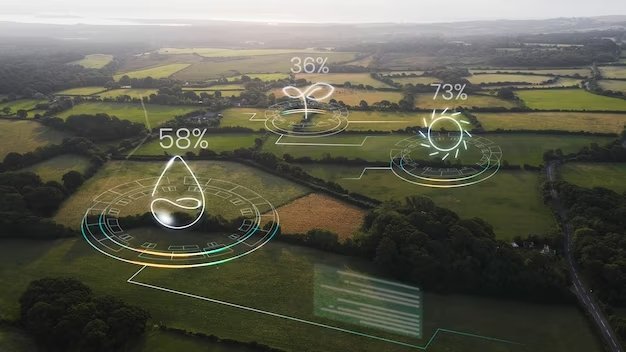The Impact of Technology on Agriculture
Technology has already had a significant impact on the agriculture sector,

and it is only going to become more important in the future. Here are some of the ways that technology is impacting agriculture:
- Increased productivity and efficiency. Technology can help farmers to do more with less, by automating tasks, improving decision-making, and increasing yields. For example, precision agriculture uses sensors and satellite data to help farmers apply water and fertilizer more precisely, which can save them money and improve crop yields.
- Improved food safety. Technology can help to improve food safety by detecting pests and diseases early, and by ensuring that food is processed and transported safely. For example, sensors can be used to monitor the temperature of food during transportation, which can help to prevent food poisoning.
- Sustainability. Technology can help to make agriculture more sustainable by reducing the use of water, pesticides, and fertilizers. For example, drones can be used to survey fields and identify areas that need irrigation, which can help to save water.
- New products and services. Technology is also creating new products and services for the agriculture sector, such as online farm management software and subscription-based crop insurance. These new products and services can help farmers to improve their efficiency, reduce their risk, and increase their profits.
Overall, technology is having a positive impact on the agriculture sector. It is helping to increase productivity, improve food safety, and make agriculture more sustainable. As technology continues to develop, it is likely to have an even greater impact on the agriculture sector in the future.
Here are some specific examples of how technology is impacting agriculture today:
- Drones: Drones are being used for a variety of tasks in agriculture, including crop scouting, irrigation management, and pest control.
- Sensors: Sensors are being used to collect data on soil moisture, temperature, and plant health. This data can be used to improve irrigation scheduling, optimize fertilizer application, and detect pests and diseases early.
- Artificial intelligence (AI): AI is being used to develop new tools for precision agriculture, such as decision support systems that can help farmers to make better decisions about crop management.
- Blockchain: Blockchain is being used to track the provenance of food products, which can help to ensure food safety and traceability.
These are just a few examples of how technology is impacting agriculture today. As technology continues to develop, it is likely to have an even greater impact on the agriculture sector in the future.
Read: the-future-of-technology-a-force-for-good-or-for-bad
Here are some specific examples of the potential disadvantages of technology in agriculture:
- Increased costs: The use of technology can increase the cost of production for farmers. For example, the use of drones and sensors can be expensive, and the cost of maintenance and repairs can also be high.
- Dependency on technology: If farmers become too reliant on technology, they may be at risk if the technology fails. For example, if a farm's irrigation system breaks down, the farmer may not be able to irrigate their crops, which could lead to crop loss.
- Environmental impact: Some agricultural technologies, such as the use of pesticides and fertilizers, can have a negative impact on the environment. For example, the use of pesticides can pollute water supplies and kill beneficial insects.
- Social impact: The use of technology in agriculture can lead to changes in the social structure of rural communities. For example, if fewer people are needed to work on farms, this could lead to unemployment and social unrest.
It is important to weigh the potential benefits and disadvantages of technology in agriculture before making a decision about whether or not to use it. However, it is also important to remember that technology can be a powerful tool for improving productivity, food safety, and sustainability in agriculture.
What's Your Reaction?





















